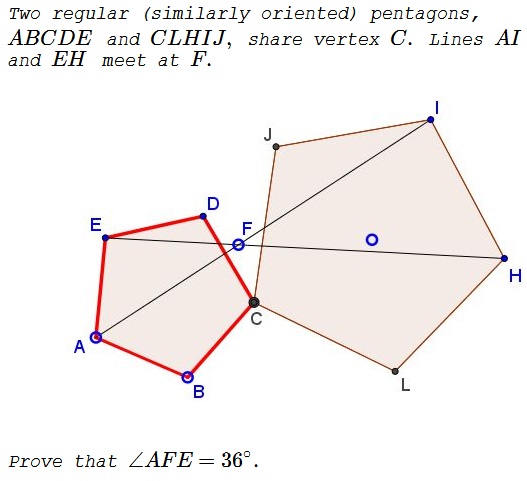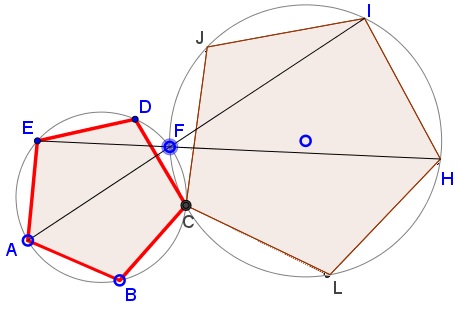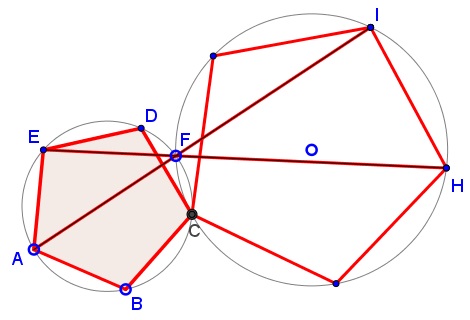Two Regular Pentagons Joined at Vertex
What Is That about?
Problem 1

Problem 2
Two regular (similarly oriented) pentagons, $ABCDE\,$ and $CLHIJ,\,$ share vertex $C.\,$ Lines $AI\,$ and $EH\,$ meet at $F.$

Prove that $F\,$ is the second intersection of the circumcircles $(ABCDE)\,$ and $(CLHIJ).$
This can be reformulated as below:
Given a regular pentagon $ABCDE\,$ and point $F\,$ on the arc $\overset{\frown}{CD}\,$ of its circumcircle $(ABCDE).\,$ Circle $(O)\,$ passes through $C\,$ and $F\,$ away from $(ABCDE).\,$ Lines $AF,EF\,$ meet $(O)\,$ the second time at $I\,$ and $H,\,$ respectively.

Prove that $IH\,$ is a side of a regular pentagon inscribed into $(O),\,$ with $C\,$ one of its vertices.
Solution 1
We'll address the latest reformulation as the most obvious. The crux of the matter is that, regardless of the position of $F\,$ on $\overset{\frown}{CD},\,$ $\angle AFC=72^{\circ}\,$ and $\angle EFC=108^{\circ}\,$ since both are inscribed into $(ABCDE).\,$

If so, $\angle CFI=108^{\circ}\,$ and $\angle CFH=72^{\circ},\,$ implying $\angle CIH=72^{\circ},\,$ making $\overset{\frown}{HC}\,$ twice as big as $\overset{\frown}{IH},\,$ which explains the assertion.
Solution 2
Rotation aroun point $C\,$ through $36^{\circ}\,$ sends $\Delta ACI\,$ to $\Delta ECH\,$ and the claim therefore follows.$
Acknowledgement
The problem has been posted on twitter with a GeoGebra illustration by Tim Brzezinski; Steve Phelps join the forces with an illustration of his own; Vincent Pantaloni suggested an explanation. The above is an application of reverse engineering to all of these. Solution 2 is by Dorde Baralic.
![]()
|Contact| |Up| |Front page| |Contents| |Geometry|
Copyright © 1996-2018 Alexander Bogomolny73581344
